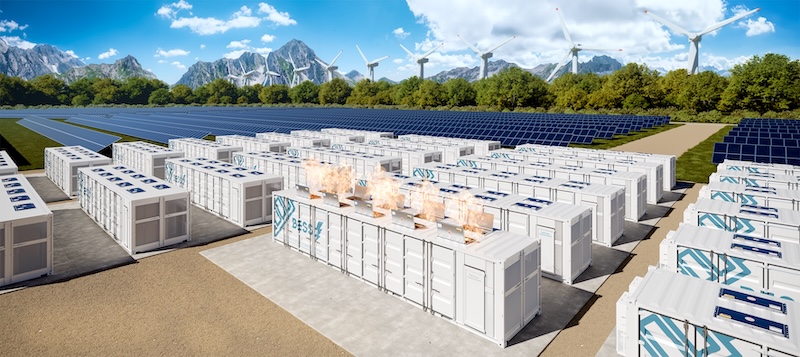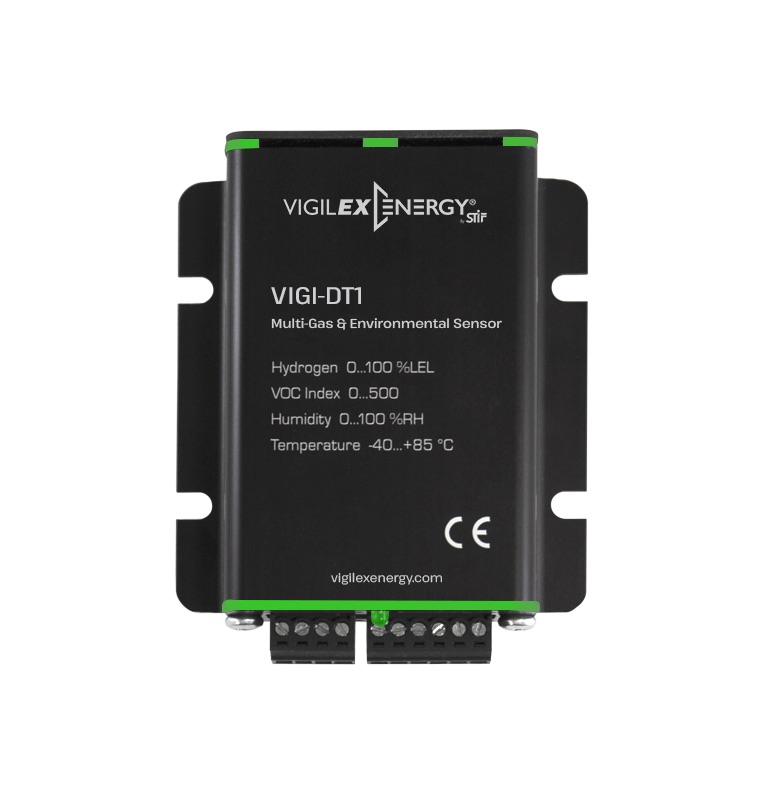Ensuring Safety in Battery Energy Storage Systems Through a Multi-Layered Approach
As the global adoption of renewable energy accelerates, Battery Energy Storage Systems (BESS) are becoming essential for grid stability, peak load management, and the transition to a low-carbon future. However, this growing reliance on BESS also underscores the critical need for comprehensive safety measures. Lithium-ion batteries (currently the most widely used technology in BESS) pose risks such as thermal runaway, flammable gas release, fire, and explosion. Addressing these hazards requires a multi-layered safety approach that incorporates detection, suppression, passive protection, and intelligent design.

Understanding the complexity of BESS safety risks
Lithium-ion batteries, especially the newer high-capacity formats like 587Ah and 600Ah+ LFP (Lithium Iron Phosphate) cells, store immense amounts of energy. While these enhance efficiency and reduce costs, they also raise the stakes in the event of failure. During thermal runaway, a self-sustaining exothermic reaction, the cells can release significant volumes of flammable gases — notably hydrogen and volatile organic compounds (VOCs) — creating a serious explosion and fire risk.
In large-scale BESS setups, the combined gas emissions from multiple cells can rapidly reach explosive concentrations. Moreover, once ignited, lithium-ion fires are intense, persistent, and prone to re-ignition, making suppression extremely challenging with conventional methods.
A Multi-layered safety framework
To effectively mitigate these risks, BESS safety must be built on complementary and redundant safety layers. No single protection method can fully address the complexity of thermal incidents. A robust safety architecture includes the following four pillars:
 1. Gas detection and ventilation
1. Gas detection and ventilation
Early detection of hydrogen, methane, and VOCs is crucial to preventing catastrophic failures. Modern detection systems use electrochemical sensors, metal oxide semiconductor (MOS) sensors, and ultra-sensitive hydrogen and flammable gas detectors to monitor hazardous gas buildup at the cell or rack level. These systems must be closely linked with ventilation controls for real-time response. Ventilation, whether natural or mechanical, is key to diluting and expelling flammable gases. In tightly packed BESS environments, displacement ventilation — which introduces airflow at the floor and exhausts it through ceiling vents — is often the most effective method. Computational Fluid Dynamics (CFD) modeling is increasingly used to optimize airflow, eliminate stagnant zones, and meet standards such as NFPA 69.
2. Fire suppression systems
In the event of ignition, rapid and effective fire suppression is essential. Commonly used suppression technologies include water mist systems, clean agents such as Novec 1230 and F500, encapsulator agents, CO₂, inert gases, dry chemical powders, and aerosol-based systems. For optimal performance, these systems are often integrated with Battery Management Systems (BMS) and SCADA platforms. This allows for sensor fusion — combining temperature, gas, smoke, and system data — to trigger suppression precisely when required, enhancing reliability and reducing false activations.
3. Explosion relief mechanisms
If flammable gases accumulate, passive explosion protection such as deflagration panels becomes critical. These panels are engineered to rupture at predetermined pressures, safely venting overpressure and preserving the enclosure’s integrity.
Proper design, sizing, and placement must be based on cell-level gas emission data, CFD modeling, and relevant standards like NFPA 68, NFPA 69 and UL 9540A. The upcoming 2026 edition of NFPA 855 emphasizes partial volume deflagration analysis, allowing for smarter venting designs based on realistic gas dispersion scenarios.
4. Passive fire protection
Passive fire protection includes fire-resistant enclosures, thermal barriers, and modular compartmentalization. These measures prevent fire spread, limit heat propagation, and safeguard nearby modules. For instance, fire-resistant materials can delay ignition transfer, while compartmentalized layouts isolate battery modules, preventing cascade failures. Thermal barriers add an extra layer of protection by absorbing or deflecting heat away from adjacent systems. These features are especially vital in high-density BESS installations, where a failure in a single module could compromise the entire system.
Evolving safety for high-capacity cells
The emergence of high-capacity LFP cells has dramatically increased energy density within BESS installations. While this improves performance and reduces costs, it also raises the magnitude of safety risks. A 600Ah LFP cell, for example, can release thousands of liters of flammable gases during thermal runaway.
To address this, modern BESS designs must evolve by integrating:
- High-sensitivity gas and thermal sensors at the module/cell level
- Intelligent ventilation and pressure relief systems for high-density layouts
- Fast isolation protocols to prevent propagation
- AI-driven diagnostics and predictive maintenance for early anomaly detection
With real-time monitoring, predictive analytics, and automated emergency responses, operators can shift from reactive to proactive safety strategies.
Toward a safer, sustainable future
Battery energy storage is a cornerstone of our renewable energy transition. But its continued success hinges on managing complex safety challenges. A multi-layered safety strategy — encompassing gas detection, ventilation, fire suppression, explosion relief, and passive fire protection — is essential to safeguarding people, assets, and the environment. As battery technologies evolve, safety engineering must keep pace. Through standardization, technological innovation, and collaborative best practices, the industry can create resilient, high-performance BESS systems that support a clean energy future without compromising on safety.
Pavan Hanumsagar is BESS Technical Engineer at Vigilex Energy. Vigilex is a specialized division of the French company STIF, created in 2022 to meet the growing need for passive fire and explosion protection in battery energy storage systems (BESS)
Vigilex Energy | vigilexenergy.com
Author: Pavan Hanumsagar
Volume: 2025 September/October









